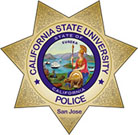Downtown San Jose road work will result in better biking
Posted by the San Jose Mercury News June 20, 2012.
By Eric Kurhi
To encourage pedal-powered transit downtown, San Jose roads are being ripped apart, repaired and repainted.
“We’re striving to make downtown San Jose the most bike-friendly downtown in the Bay Area,” said Jesse Quirion, a transportation specialist with the city.
That entails more than laying down the paint for bike lanes and buffer zones. The work is being done along with scheduled pavement maintenance. And the problems on some of the roads are more than just asphalt-deep, Quirion said.
“Some areas have what we call dig-outs,” he said. “Base failure. We need to repair the underground first and then do the overlay and slurry seal.”
Work is currently being done on Third Street, Fourth Street, 10th Street, 11th Street and Almaden Boulevard — all expected to be completed by mid to late July.
Some roads will have traditional bike lanes. Others will have additional room via painted buffer zones, and one stretch of Fourth Street will be physically separated from traffic by a 4-inch-high rubberized barrier where it runs alongside San Jose State University.
Existing traffic lanes on most of the affected arteries are being reduced to two lanes instead of three as part of a long-term plan to encourage people to get around without a car, Quirion said.
“Initially we may see some traffic impacts, but we hope it will be alleviated over time,” he said. “Hopefully people will make a shift to alternative transportation.”
Quirion said other bike projects are on tap to start later this summer, including a green-colored bike lane on San Fernando Street from Cahill Street to SJSU like the one on Stevens Creek Boulevard in Santa Clara as well as selected corridors in San Francisco.
“It makes it stand out, highlights it and notifies drivers that the bike lane is there,” Quirion said.
The city also is partnering with the Bay Area Air Quality Management District to set up 20 bike share stations throughout downtown, where public bikes can be checked out with a credit card and returned to a different location.
Quirion said similar programs are proving popular in New York City, Washington, D.C., and a few locations in Miami.
San Jose’s bike share program will begin in September, Quirion said.
Contact Eric Kurhi at 408-920-5852. Follow him at Twitter.com/erickurhi.


